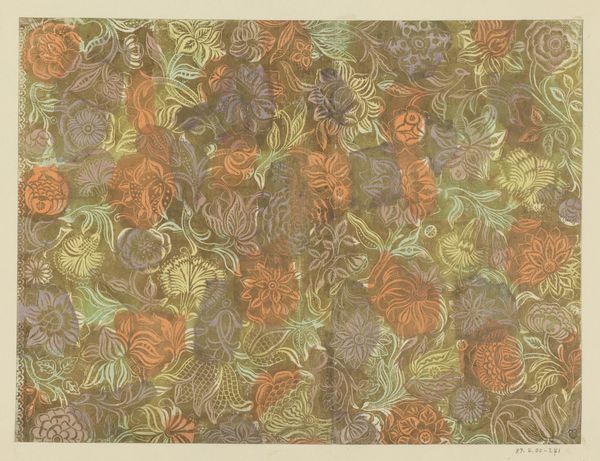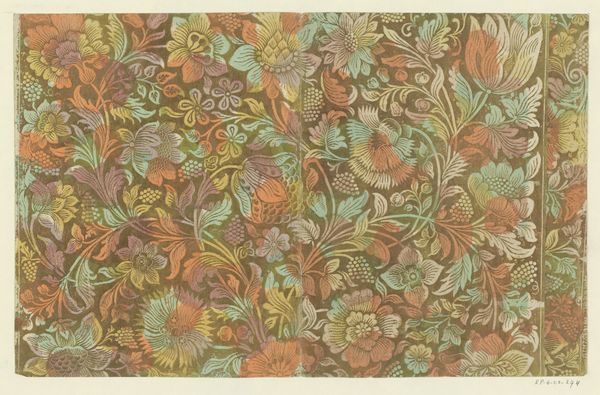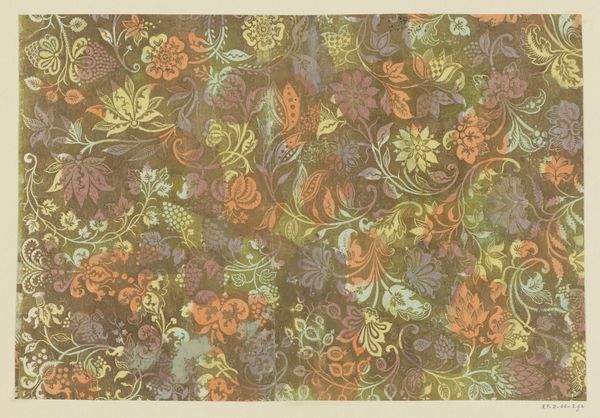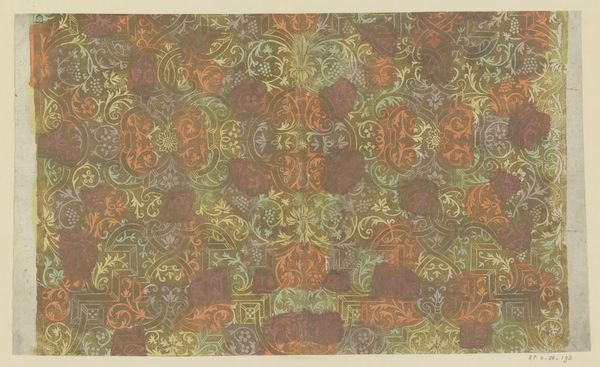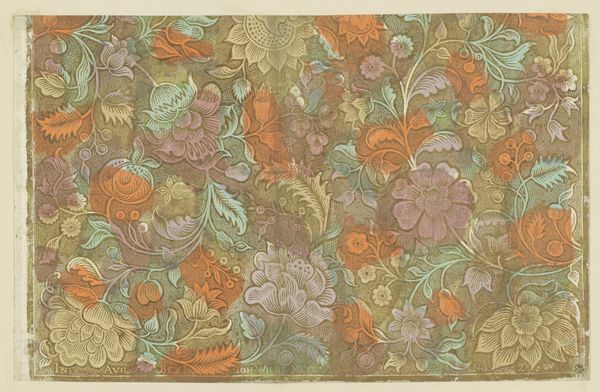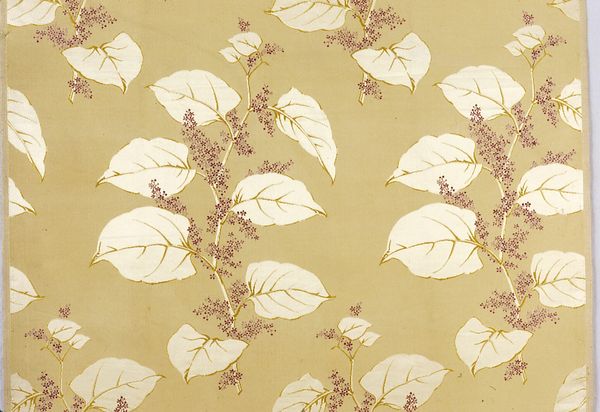
Copyright: Modern Artists: Artvee
Curator: Here we have Andy Warhol's "Poinsettias," a screenprint from 1982 rendered in acrylic paint. What are your initial thoughts? Editor: The bold simplicity immediately strikes me. The flattened forms and the interplay between that deep green and off-white background evoke both warmth and a sort of detached, commercial feel. Curator: Exactly. Warhol's appropriation of everyday imagery is front and center. We should note that, throughout his career, Warhol engaged with concepts of accessibility. It can be easy to forget that during his time as a commercial illustrator for magazines, there was some amount of professional restriction on artists to "be" commercial or overtly political. Editor: And what do you think this choice of subject matter tells us about Warhol’s broader commentary? This isn’t Marilyn or a soup can. Curator: The poinsettia, of course, is deeply embedded in our cultural celebration of Christmas. Warhol takes a traditional symbol and gives it that pop art twist, forcing us to reconsider the commodification of holidays and the role of mass production in shaping our perceptions of celebration. One might even see a link between Warhol's earlier focus on food products such as soup cans and something like these holiday plants: each are things that we, in society, have a strange habit of fetishizing and marketing as a symbol of wealth and prestige. Editor: I think his choice to use green rather than the usual vivid red of poinsettias really emphasizes the artificiality of the image. It detaches it further from any natural association. The somewhat blotchy print application, too, subverts notions of idealized representation. Curator: Absolutely. It reminds us that, beneath the shiny surface of consumerism, there's often a degree of detachment and perhaps even a hint of melancholy. Warhol's genius was, in part, an openness and willingness to allow such cultural complexities to speak within, and *to*, popular visual idioms. Editor: Looking at this piece through the lens of contemporary sustainability concerns, Warhol's representation almost serves as a critical premonition about artificiality and the loss of meaning embedded in these cycles. Curator: A poignant way to see it. Editor: Yes, and it leaves you contemplating the cultural significance, and perhaps the gradual cultural and environmental shifts regarding, such celebrated icons. Curator: A beautiful thing about artworks is their uncanny and limitless ways of representing these subtle transitions.
Comments
No comments
Be the first to comment and join the conversation on the ultimate creative platform.

